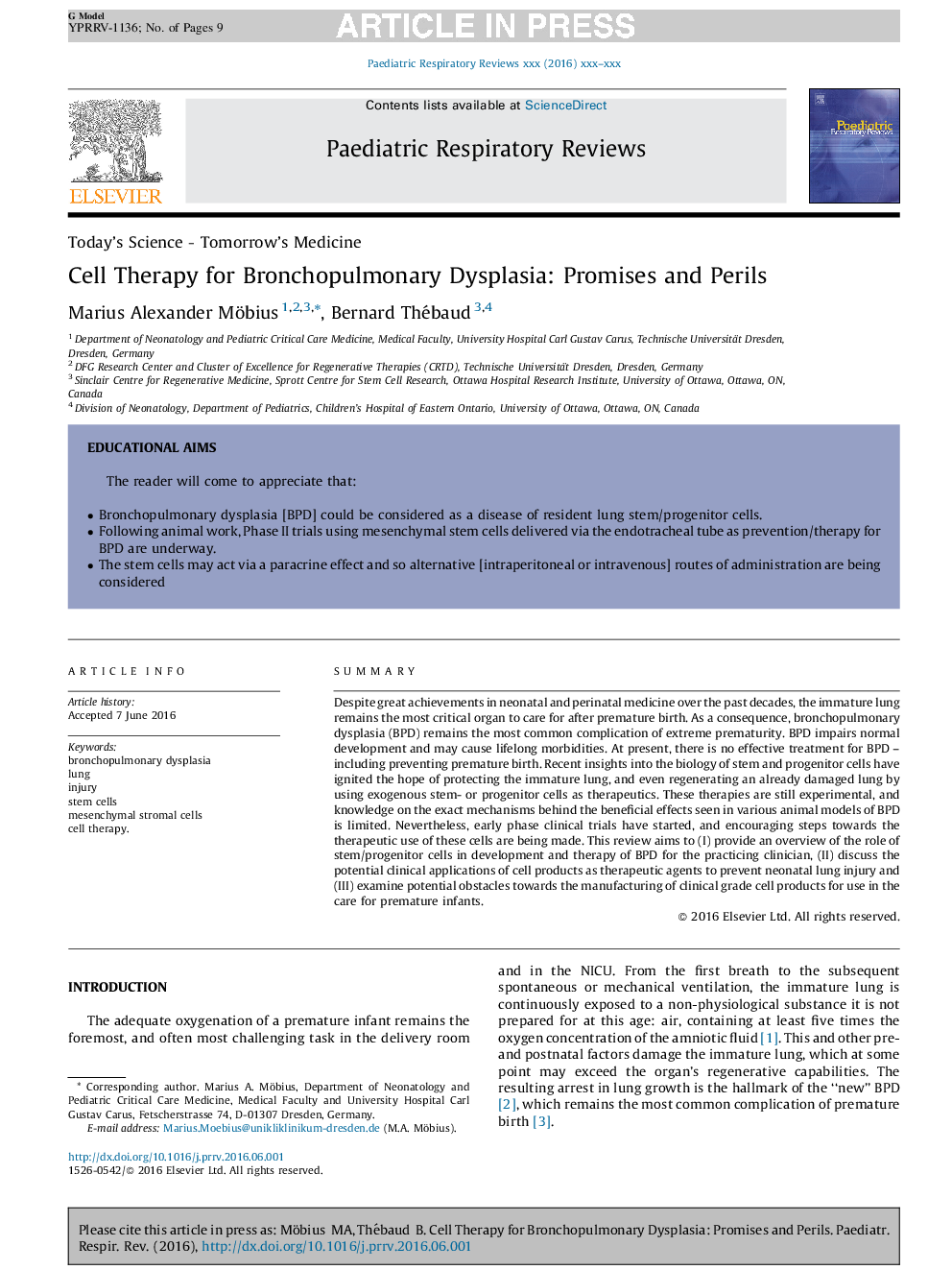| Article ID | Journal | Published Year | Pages | File Type |
|---|---|---|---|---|
| 8813052 | Paediatric Respiratory Reviews | 2016 | 9 Pages |
Abstract
Despite great achievements in neonatal and perinatal medicine over the past decades, the immature lung remains the most critical organ to care for after premature birth. As a consequence, bronchopulmonary dysplasia (BPD) remains the most common complication of extreme prematurity. BPD impairs normal development and may cause lifelong morbidities. At present, there is no effective treatment for BPD - including preventing premature birth. Recent insights into the biology of stem and progenitor cells have ignited the hope of protecting the immature lung, and even regenerating an already damaged lung by using exogenous stem- or progenitor cells as therapeutics. These therapies are still experimental, and knowledge on the exact mechanisms behind the beneficial effects seen in various animal models of BPD is limited. Nevertheless, early phase clinical trials have started, and encouraging steps towards the therapeutic use of these cells are being made. This review aims to (I) provide an overview of the role of stem/progenitor cells in development and therapy of BPD for the practicing clinician, (II) discuss the potential clinical applications of cell products as therapeutic agents to prevent neonatal lung injury and (III) examine potential obstacles towards the manufacturing of clinical grade cell products for use in the care for premature infants.
Related Topics
Health Sciences
Medicine and Dentistry
Perinatology, Pediatrics and Child Health
Authors
Marius Alexander Möbius, Bernard Thébaud,
